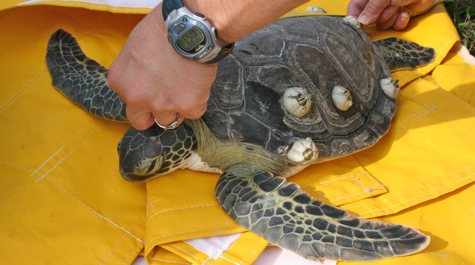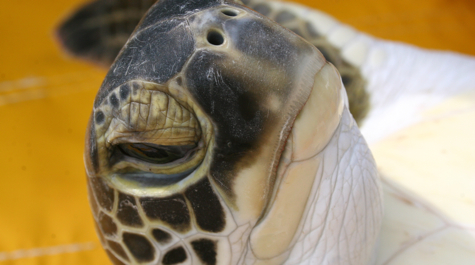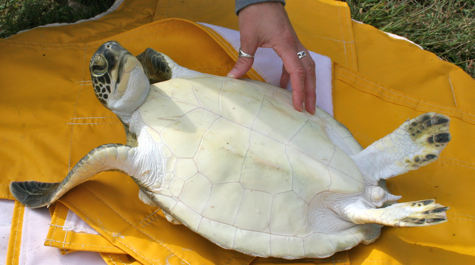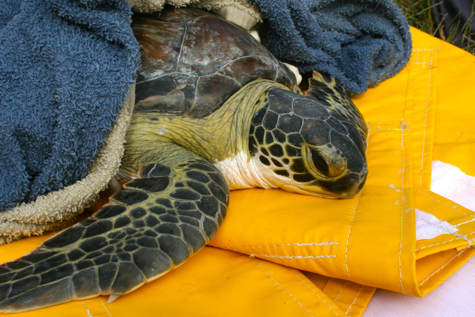Green Sea Turtles
Green sea turtles (Chelonia mydas) are endangered in U.S. waters. Several juvenile turtles are seen in Chesapeake Bay during the late summer and early fall., their average length is ~ 30 cm (12 in). Adult green sea turtles feed on sea grasses and algae while juveniles are omnivorous, feeding on both aquatic plants and animals. These turtles are valued for their eggs and meat; they are named from the color of their fat.
Status
Listed as "Endangered" in U.S.; globally "Threatened"
Size
Adults reach 300 - 400+ lbs, 36 - 43 inches
Sexual Maturity
Possibly 35-50+ years (Hawaiian Archipelago stock) (Balazs & Chaloupka 2004)
Nesting Habitat
Tropical/subtropical beaches; open beach
Juvenile Habitat
Florida Bay, Caribbean, Gulf of Mexico, South/Central America
Diet
Vegetarians, feed on sea grasses, algae; juveniles are omnivorous (eat both plants & animals)







